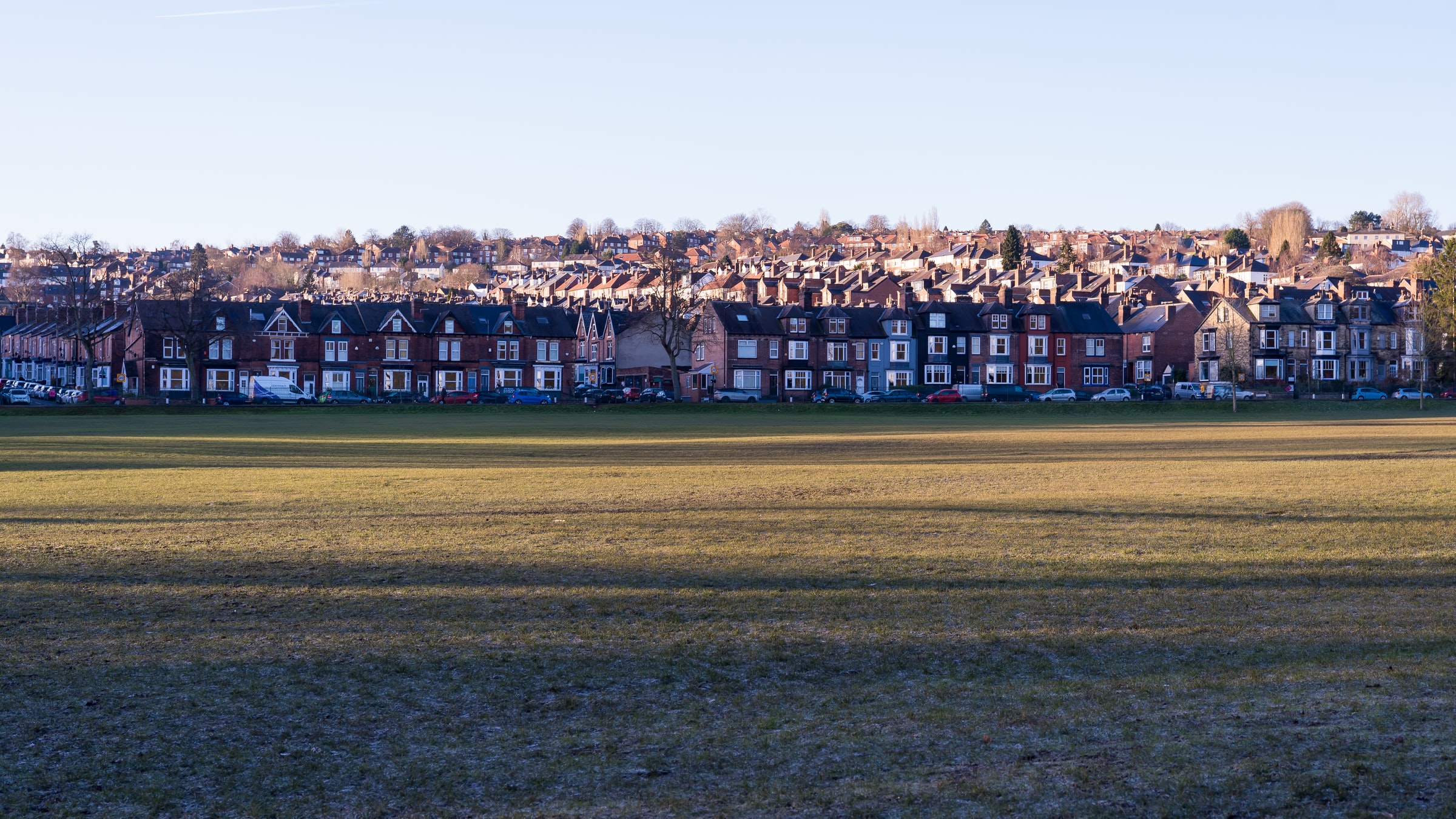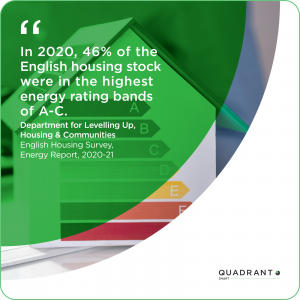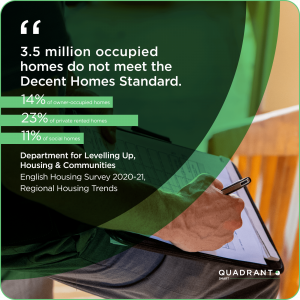English Housing Survey: The Key Findings

The UK Government has published its annual English Housing Survey covering 2020-21. Housing Industry Leaders investigates the key findings.
Providing a range of information on people’s housing circumstances, the condition of their homes, and the efficiency of housing in England, every year, the UK Government publishes the English Housing Survey.
Energy Efficiency Of The Housing Stock Has Continued To Increase
One of the reports focuses on the energy efficiency of the English housing stock between 2010 and 2020, the use of low carbon technologies, smart technologies, household awareness of Energy Performance Certificates (EPCs) and the type of homes that are considered hard to treat.
It has been found that the energy efficiency of the English housing stock has continued to increase over the last decade. In 2020, 46 per cent of the houses were in the highest energy rating bands of A to C. Whereas, in 2010, just 14 per cent of the housing stock had the highest EER bands.
Social rented homes were found to remain the most energy-efficient, although the gap between the private sector and the social sector has been narrowed.
In 2020, over half (63 per cent) of dwellings in the social rented sector have an EER of band C, compared with 39 per cent of the private sector.
Housing associations and local authority dwellings were found to be more likely to be the EER of band C (65 per cent and 59 per cent).

Improvements In Housing Quality Have Not Been Consistent
Housing quality has been examined using three metrics: Whether homes meet the Decent Homes Standard, have HHSRS Category 1 hazards, or have problems with dampness.
A total of 15 per cent (3.5 million) of occupied homes did not meet the Decent Homes Standard in 2020, with nine per cent (2.2 million) revealed to have at least one Category 1 hazard, and 941,000 had severe damp. The prevalence of all these poor housing conditions declined between 2010 and 2020.
Improvements in housing quality have not happened consistently in all regions, as in 2020, Yorkshire and the Humber had the highest proportion of non-decent homes (20 per cent). It was one of the regions with the lowest level of improvement between 2010 and 2020.
Yorkshire and the Humber were also found to have the highest proportion of occupied homes with Category 1 hazards (15 per cent in 2020).
Occupied homes that had the highest incidence of dampness in 2020 were found in the North West (six per cent), Yorkshire and the Humber (six per cent) and the South West (five per cent).
Between 2010 and 2020, it was discovered that the biggest improvements were in the South East, from 24 per cent to nine per cent. This was followed by London (from 25 per cent to 12 per cent), the East of England (26 per cent to 13 per cent) and the West Midlands (28 per cent to 15 per cent).
Most People Have Stated That They Feel Safe In Their Homes
Ensuring that housing quality sees improvements is essential, and with this, the housing sector must make sure that residents feel safe in their homes.
Respondents were asked whether they agreed or disagreed with the following statement: ‘I do not feel safe at home because I fear that a fire may break out’.
Most people have been found to feel safe in their homes and don’t fear that a fire will break out, as this report found that in 2020-21, 87 per cent of households said that they felt safe from a fire in their home. While eight per cent said that they neither agreed nor disagreed that they felt safe at home.
However, five per cent of households said that they feel unsafe in their home because they fear that a fire may break out; this is unchanged from 2019-20 when the question was first asked in the English Housing Survey.

Most Social Renters Are Satisfied With Their Accommodation
Focusing on households within the social rented sector and bringing together demographic and financial information collected, the quality and condition of social rented homes have been focused on.
In the social rented sector, there are four million households, with a higher proportion in housing association homes compared to local authority homes.
Housing association tenants make up 10 per cent of all households in England (2.4 million), while local authority tenants account for seven per cent of all households (1.6 million).
It was found that most social renters are satisfied with their accommodation, tenure, area and how housing services have been provided by their landlord. However, satisfaction with repairs and maintenance was found to be lower than satisfaction in other measures.
Overall, 75 per cent of social renters are satisfied with their accommodation, although this varies by region. Across England, satisfaction with accommodation ranges from 66 per cent in London to 85 per cent in Yorkshire and the Humber and the East Midlands.
Looking at the key findings from the English Housing Survey, it is clear that progress and improvements in the housing sector are being made, but there is still a lot of work that needs to be done.

